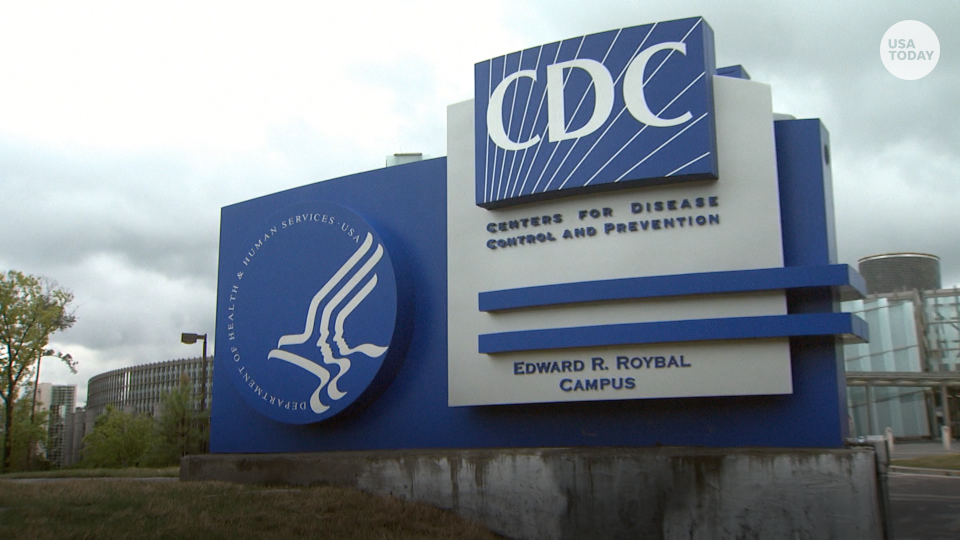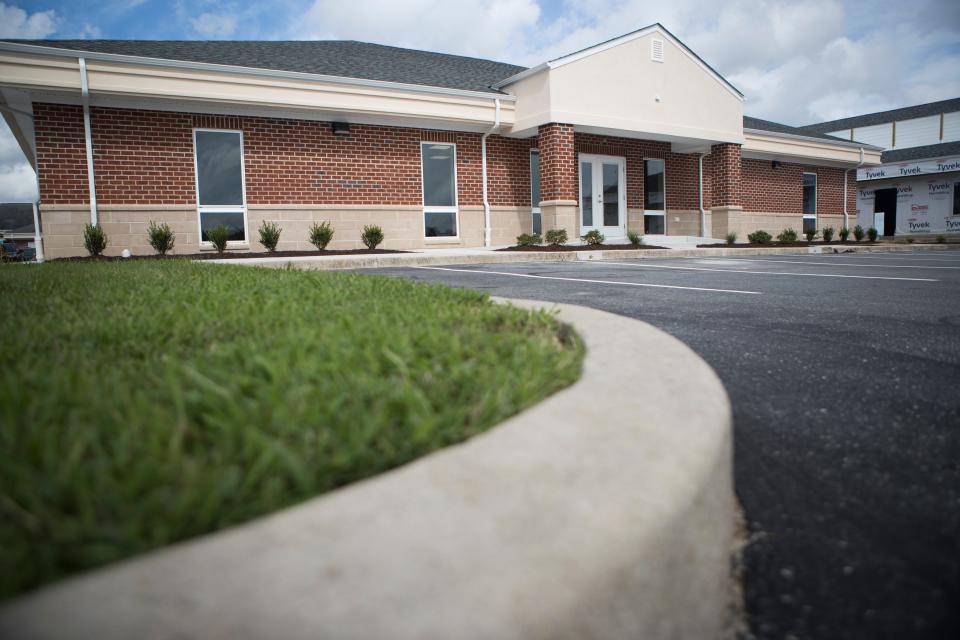Abortion by the numbers: Why a full picture on a fiery topic this election is hard to paint
This Election Day will fall 137 days after a Supreme Court decision that dismantled five decades of precedent on abortion care in the United States.
Perilous trends in access have already sharpened, the landscape now varying by border crossing. Exactly 100 days after the decision, 66 clinics across 15 states had already been forced to stop offering abortions entirely, according to Guttmacher Institute analysis. These states enforce total bans or bans after six weeks. Other states have boosted efforts to expand care, for their residents and newcomers.
Some Americans felt agony at the fall of Roe v. Wade; others, jubilation. Either way, it remains an explosive topic in these midterm elections. And whether politically weaponized or further studied, data is a shared touchstone. From maternal health care to effective sex education, experts say accurate abortion statistics shed light on much more than terminated pregnancies.
In a time when tracking access becomes pivotal, how does the U.S. look to keep a pulse on one of the most divisive subjects of health care and of this election cycle?
A simple answer would be hard to come by.
“Keeping track of the number of abortions that happen in U.S. just got a lot more difficult,” said Rachel Jones, principal research scientist with Guttmacher Institute.
Not every provider or every state follows the same data-reporting methods. Overworked and understaffed, some health care facilities don't want to be recognized among those providing abortion, even with data collection anonymous. And some patients fear sharing they crossed certain state lines.
Like much of public health reporting, collection methods may fall short of fully encompassing.
States like Delaware, Pennsylvania, New Jersey and others throughout the Northeast have already cited increased demand crossing borders. For Pennsylvania, a state with its own legacy of abortion restrictions and 24-hour waiting period, Democratic Gov. Tom Wolf vowed to protect such rights while in office. But with a new governor to be decided this election — and the state's Republican-led Legislature already lining up bills to potentially roll back abortion rights — it has become a key issue on the ballot for many.
If access tightens, nearby states would need to expect even more patients. As one Planned Parenthood Delaware spokesperson put it: “It will take a while to see how this shakes out.”
Nationally two organizations look to measure that care. Only, they each use different methods and release different results.
Surveys say...

The Centers for Disease Control and Prevention and the Guttmacher Institute are two prominent organizations aiming to track abortion care throughout the country.
The CDC, keeping the books since 1969, compiles figures voluntarily reported by governmental health agencies. These figures come in from most states, as well as New York City and Washington, D.C. However, the CDC’s latest totals exclude the entirety of California, Maryland and New Hampshire, which did not report data to the agency.
The Guttmacher Institute shares an "Abortion Provider Census” every three years, contacting every known provider of abortions in the country since 1973. Clinics, hospitals, physicians’ offices, all known providers of legal induced abortion in a given year — over 1,500 facilities in 2017 — are surveyed by the institute. Abortion Patient Surveys are also performed typically every five to seven years.
Clinics make up some 95% of these procedures, according to Guttmacher. Outfits unresponsive to questionnaires or follow-up calls — less than half — are covered by state health department data, with the remaining totals estimated by Guttmacher researchers.
National:Michigan, 4 other states have abortion on ballot
More:Latinas have long been targeted by abortion misinformation. It's getting worse.
The latest year for CDC reporting is 2019, when the agency reported 629,898 of these procedures, and Guttmacher’s latest available figures are from 2020 with 930,160. Guttmacher’s reporting includes reporting from every state, Pew Research Center explains in a recent breakdown, so that's one reason its figures tend to be higher than the federal government.
"Getting accurate information is time-consuming and difficult, but it does again result in more complete and more accurate [statistics],” Jones said, having worked within the Guttmacher Institute since 1999, overseeing the provider census since 2008.
The researcher said her institute's surveillance is “the most comprehensive and most accurate source of information on abortion in the United States,” as CDC data is often incomplete.
Abortions are broadly divided into two categories: surgical abortions and medication abortions. Guttmacher’s data notes 2020 was the first time that more than half of all abortions in clinical settings in the U.S. were medication abortions.
If taking the more modest measurement by the CDC, the overall number of reported abortions decreased by 18%, from 2010 to 2019. But, in the final year of that measurement, the total number of reported abortions increased 2%.
In 2019, the same data showed about 24 abortions per 1,000 Black women — over three times the same rate among white women, among those ages 15 to 44. Most women receiving care were in their 20s, a majority experiencing the procedure for the first time.
This data is not without its shortcomings.
The term women was maintained throughout the reporting to “be consistent with the collection and reporting of denominator data” used to calculate abortion rates. Also, just 29 states and Washington, D.C., reported data by race and ethnicity to the CDC for 2019.
That means all calculations based on race, in that report, exclude roughly 42% of reported abortions by the same agency, in the same year.
Some excluded areas, in terms of race data or general lack of reporting, have large populations of color, the CDC notes, and the absence of data from these places likely reduces the report’s “representativeness.” However, similar trends have been shown in other U.S.-based studies, the agency said in 2019’s Abortion Surveillance report.
Guttmacher has shared similar rates by race and ethnicity, as well as that the majority of abortions are borne by those living at or below the poverty level. But a fuller summary of its 2020 data will be published later this year in a peer-reviewed journal article.
These figures, Jones echoed, are disproportionately low-income, disproportionately people of color, with many having children already — “So it's like low-income women struggling to take care of the children that they already have.”

Since June 24, tracking this data holds different meaning.
“It's disheartening that this is the direction that our research has had to go in,” Jones said. “We have released information showing that after almost three decades of declining, the number of abortions in the U.S. have increased between 2017 and 2020. So these services are being taken away from people when need is increasing.”
The researcher says her team is focused on delivering ongoing information, keeping a close eye on medicated abortions sought outside clinics, as well as more abortion care crossing state lines.
More than one statistic

Some Planned Parenthood affiliates already operate as multistate entities. Many others are bolstering existing care offered to out-of-state patients.
Planned Parenthood Delaware is just one example on the East Coast. The state affiliate said accurate statistics of patients coming in to end unwanted pregnancies are “hard to get a handle on.”
Nearly 1 in 7 women who received an abortion in Delaware in 2019 lived out-of-state, according to federal data. However, Guttmacher data also shows 44% of Delaware residents seeking care traveled out of their state to receive an abortion in 2019 and 2020, even as the procedure remains legal, with relatively few restrictions.
The state affiliate said it hopes to increase that access but “not at the expense of Delawareans.”
The CDC reports over 2,000 abortions provided in Delaware in 2019. White patients made up 42.5%, while Black patients marked 41.9% and Hispanic 12%. In 2020, the state was nearly 70% white in population.
Experts say accurate abortion statistics reveal much more than terminated pregnancies.
“Abortion is just one pregnancy outcome,” Jones said. “People's lives, circumstances that lead them to get pregnant when they didn't intend to be. … There are just so many circumstances and decisions that impact that.”
Effective sex education; access and education on proper birth control methods; access to strong health care and family planning services; trust in such medical providers — many crossbeams hold up the picture of U.S. abortion care.
Those realities, according to a Guttmacher policy review, must fold into the larger context of significant racial disparities that persist across health outcomes in the U.S. The report called for additional study on how to help populations have fewer unintended pregnancies overall.
Back in Delaware, abortion care advocates say there’s more to be done.
Options for Delaware patients include three Planned Parenthood Clinics, in Wilmington, Dover and Seaford, while Delaware hospitals provide abortions in only limited cases, as previously reported by Delaware Online/The News Journal. Each Planned Parenthood clinic provides abortion care for those up to 16 weeks’ gestation, among other services, one day a week.
Local:In a post-Roe America, abortion remains legal in Delaware. But is it accessible?
State legislation passed this year will allow its clinics to perform more procedures, Planned Parenthood officials told USA TODAY Network, specifically by establishing more service days. The hope is to double current service days and relieve what’s already estimated to be three-week waiting periods.
Delaware and other states across the Northeast have also passed legislation expanding which providers can offer this care. April legislation in Delaware allowed physician assistants and advanced practice registered nurses to prescribe medication used for abortions.
Across 49 affiliates and some 600 different health clinics, many Planned Parenthoods providers must balance the same books, keeping their own statistics. Ripples felt from Dobbs v. Jackson Women's Health Organization will continue to be felt throughout the country.
As one national spokesperson put it, just over 100 days later:
“Really, nowhere is safe.”
This article originally appeared on USA TODAY NETWORK: Exact figures on abortion are hard to track. Here's why it matters

